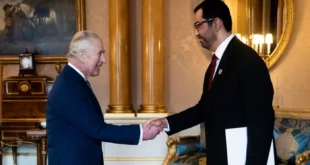Ukraine
Russian forces made gains in east and captured last pocket of resistance in Mariupol in south, as Ukrainian forces advanced in north; hostilities could intensify, escalate or spread in coming weeks. Russian forces 23 May began advancing on Severodonetsk and Lysychansk cities from three directions to encircle Ukrainian troops and seize last territories in Luhansk region under Ukrainian control; 31 May took control of large proportion of Severodonetsk city, although Ukrainian forces still retained some areas. Elsewhere in east, Russian forces 7 May bombed school in front line village of Bilohorivka, killing around 60. Governor of Luhansk 8 May said Ukrainian troops had withdrawn from Popasna city, marking biggest Russian breakout across old contact line that had divided warring parties since 2014 conflict; Severskiy Donets River, which Russian forces 11 May failed to cross, formed much of northern front line. In south, Russian forces 3 May began attacking Azovstal steel plant in Donbas port city of Mariupol; by 19 May, nearly 1,730 Ukrainian troops had surrendered before being sent to camps in Russian-held territories where de facto authorities announced they would face “international tribunal.” Defeat gives Russia control of land corridor between Mariupol and major port city of Kherson; reports indicated deadly insurgent attacks however continued in Melitopol city, midway between Mariupol and Kherson. In north, Ukrainian forces launched successful counter-offensives. Notably, forces 2 May took control of Stariy Saltiv town; 15 May reached Russian border north of Kharkiv, winning city temporary reprieve from Russian artillery that continued sporadically. On humanitarian front, UN 10 May said there were credible reports that Ukrainian forces mistreated, tortured or abducted Russian soldiers; 20 May estimated total 6.7mn refugees and over 8mn internally displaced from war; U.S. senate 19 May passed $40 billion aid package. Ukrainian court 23 May handed life sentence to Russian soldier for killing civilian in first war crimes trial; sentenced two others 31 May. On diplomatic front, Russia and Ukraine 17 May signalled that peace talks reached standstill. EU leaders 30 May agreed to block over two-thirds of Russian oil imports.
Yemen
April truce largely held as UN scrambled to extend deal ahead of June expiration to avoid potential return to hostilities; Sanaa airport opened for first commercial flight in six years. Hostilities remained largely paused between govt and Huthis, notwithstanding slight increase in reported violations on ground, notably in Jabal Balaq mountains in Marib governorate, Taiz and Hajjah governorates. Huthis 23 May downed alleged Saudi-led coalition spy drone, killing three and injuring three in capital Sanaa. In positive development, first commercial flight in six years 16 May left Sanaa international airport after it had been temporarily postponed in April; reopening of airport was part of UN-brokered truce along with ending restrictions on fuel shipments into Hodeida port and lifting Huthi siege on Taiz city. Regarding latter, Huthis 17 May announced new demands, including halting fighting in Taiz governorate and removing military equipment from main roads; first round of talks between Huthis and govt to reopen Taiz roads 29 May ended with no tangible results. On diplomatic front, as expiration of truce on 2 June approached, UN envoy Hans Grundberg worked to secure extension. Grundberg 12 May spoke with head of Presidential Council Rashad al-Alimi, PM Maeen Abdulmalik Saeed and VP of Council Tareq Saleh about truce. Yemeni FM Ahmed Awak bin Mubarak 17 May met U.S Sec State Anthony Blinken in U.S. capital Washington and said govt was “very hopeful to extend” truce. Head of Huthi Supreme Political Council 22 May said Huthis “are not against” extending truce. Grundberg 30 May returned to Aden city and met with Rashad al-Alimi to discuss reopening Taiz roads, and 31 May met with Huthi’s chief negotiator Mohammed Abdul-Salam, where he discussed renewing truce and reopening roads in Taiz governorate. In gesture to support truce, Saudi-led coalition 6 May returned over 100 prisoners to Yemen. Clashes between suspected al-Qaeda militants and Southern Transitional Council-aligned militia Security Belt 6 May reportedly killed dozen in Dhale governorate. Saudi Arabia 16 May agreed to transfer $174mn deposit to Yemeni central bank. Yemeni riyal was volatile after relative stability during Ramadan: 8 May deteriorated to 1040 riyal to U.S. dollar before 18 May appreciating to 980.
 Eurasia Press & News
Eurasia Press & News


